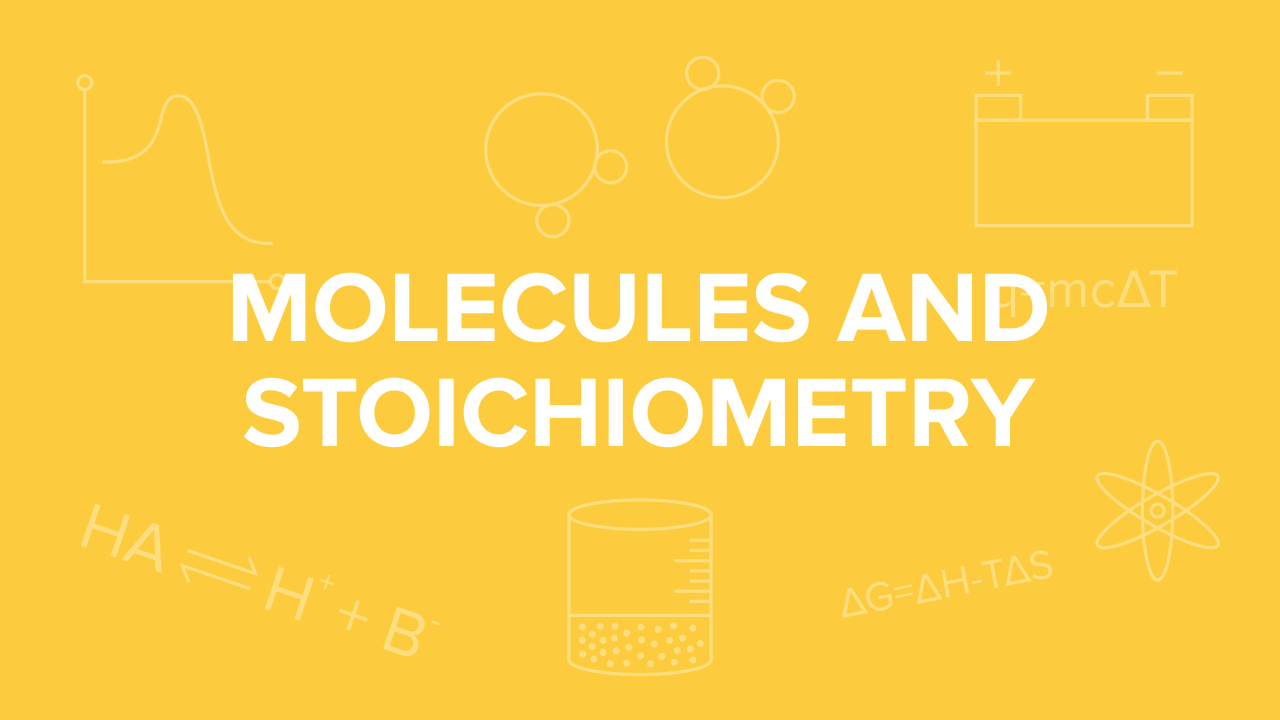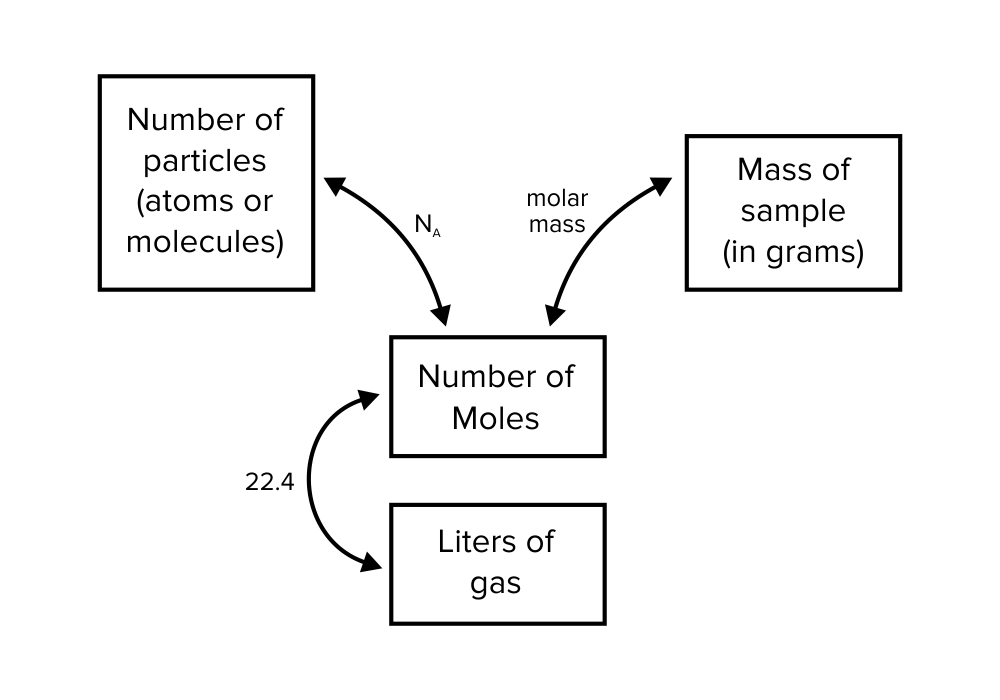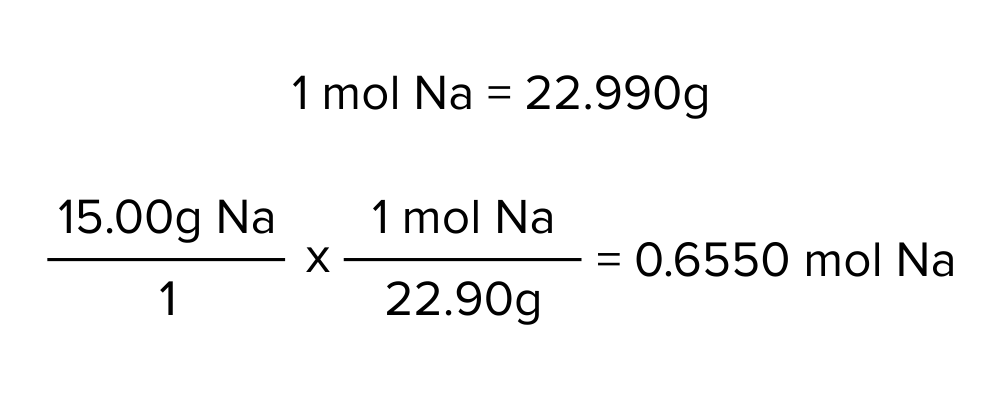Physical Address
a) Balancing equations
Molecules and Stoichiometry for the MCAT: Everything You Need to Know
Learn key MCAT concepts about molecules and stoichiometry, plus practice questions and answers

(Note: This guide is part of our MCAT General Chemistry series.)
Table of Contents
Part 1: Introduction to molecules and stoichiometry
Part 2: Moles
a) Definition of a mole
b) Molecular mass
Part 3: Formation of molecules
a) Representations of molecular formulas
b) Types of chemical reactions:
Part 4: Stoichiometry
a) Balancing equations
b) Determining theoretical yield
Part 5: High-yield terms
Part 6: Passage-based questions and answers
Part 7: Standalone questions and answers
Part 1: Introduction to molecules and stoichiometry
Molecules may be difficult to conceptualize because they cannot be easily seen. For instance, you may be able to see individual grains of table salt, but you cannot visualize a molecule of salt: the smallest possible unit of salt that can be identified as such. Even then, the salt molecule can be further broken down into atoms such as sodium and chlorine atoms.
Stoichiometry allows us to quantify and understand such quantities by employing conversion factors centralized around the unit of mole. In chemistry, we often rely on stoichiometry to relate quantities of reactants and products. Thus, stoichiometry allows us to balance chemical equations according to laws of conservation.
Understanding chemical equations and stoichiometry is crucial to performing chemistry-related calculations. While these calculations may be tricky, using scratch paper and the Periodic Table during the official MCAT is permitted.
Throughout this guide, several important terms are highlighted in bold. At the end of this guide, there are also several AAMC-style practice questions for you to test your knowledge with.
Let’s begin by understanding moles.
Part 2: Moles
a) Definition of a mole
How do we quantify reactants and products? The amount of a material that is present may be defined in terms of mass, numbers of particles, or some other unit.
It may be difficult to count the numbers of particles within a quantity of reactants or products. This is because the particles are very small and may be atoms or molecules. (For a review on the structure of the atom, be sure to refer to our guide on atomic and nuclear physics.) Instead, a unit called a mole (mol) is used to define these quantities.
The mole (abbreviated mol) is a versatile unit that can relate any number of atoms or molecules to its mass in grams. It can also be used to convert the mass in grams to the number of particles that are present. In particular, Avogadro’s number (NA) quantifies the number of particles in one mole, where NA = 6.022 x 10 23 . When given the number of particles, Avogadro’s number (NA) functions as a conversion factor to go from the number of atoms or molecules to the number of moles, or vice versa.

A mole can also be defined in the context of gaseous substances. One mole of a gaseous compound occupies 22.4 L under standard temperature and pressure (STP). In chemistry, standard temperature and pressure refer to the following: a temperature of 273.15 K and an absolute pressure of 100 kPa (equal to 1 bar).
b) Molar mass
The atomic or molecular mass of a substance is used to convert the number of moles that are present to the mass in grams. For this reason, it is also referred to as molar mass or molecular weight.
Determining the molar mass of an atomic element is relatively simple. For the case of monoatomic elements, the molar mass of the element is simply the atomic mass. The atomic mass can be found right below the element’s symbol on the periodic table. For instance, Na (sodium) has an atomic mass of 22.99 AMU. Thus, we can use this number to convert the mass of a known quantity of sodium to the number of moles in that sample.

Determining the molar mass of diatomic elements can be a bit more tricky. There are elements that exist as two atoms bonded together rather than simply one atom. There are seven diatomic elements: hydrogen (H2), nitrogen (N2), oxygen (O2), and the halogens (F2, Cl2, I2, Br2). To calculate the molar mass of these elements, we must multiply the element’s atomic mass by the number of atoms in the bonded molecule.
Let’s take oxygen as an example. The atomic mass of oxygen is 15.999, approximately 16 AMU. However, oxygen in its natural state is present as a diatomic molecule (O2). Thus, to determine its molar mass, we must multiply this quantity by the number of atoms present in the molecule.
Mcat Stoichiometry
Choose your program and continue studying
Try Sketchy for Free
Free Trial. No commitment. No credit card required.
Sketchy MCAT
Stoichiometry
Oops! Something went wrong while submitting the form.
Oops! Something went wrong while submitting the form.

Compounds and Metric Units of Molecules
Percent Composition
Reactions
Types of Reactions
Balancing Chemical Equations
Theoretical Yields and Limiting Reactants
Access full lessons by joining Sketchy MCAT!
![]()
Programs
About Us
Support
MCAT® is a registered trademark of the Association of American Medical Colleges. The United States Medical Licensing Examination (USMLE®) is a joint program of the Federation of State Medical Boards (FSMB®) and National Board of Medical Examiners (NBME®). NAPLEX® is a registered trademark of the National Association of Boards of Pharmacy. PANCE© is a registered trademark of the National Commission on Certification of Physician Assistants. NCLEX® is a registered trademark and service mark of the National Council of State Boards of Nursing, Inc. None of the trademark holders are endorsed by nor affiliated with Sketchy or this website.









